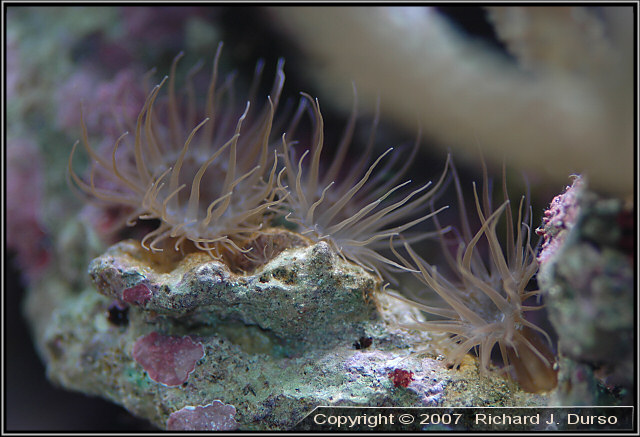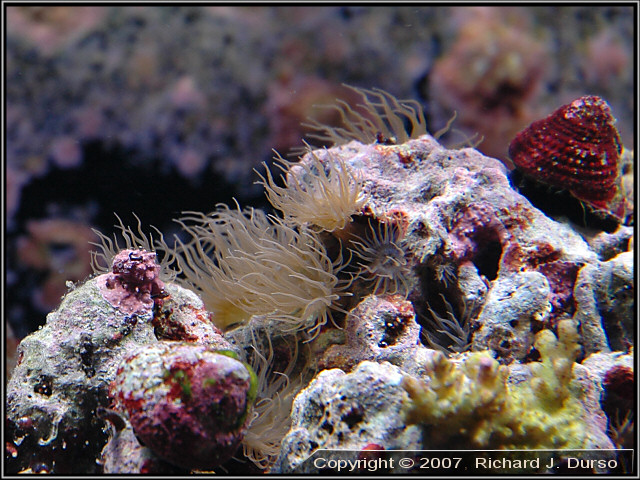
Glass Anemones - Aiptasia sp.
Picture taken February 2007, Nikon D70 Digital SLR, Sigma 105mm Macro lens Phylum: Cnidaria (Coelenterata), Class Anthozoa, Order Actinaria, Family Aiptasiidae, species Aiptasia pallida and Aiptasia pulchella. These anemones can grow as large as 4 inches tall and have long tapered tentacles. Typically they stay under 2 inches tall. These pests have symbiotic zooxanthellae which combined with heavy tank feedings results in rampant populations. The nematocysts of aiptasia have a toxin that is more potent that the majority of corals typically kept in our tanks. Thus they have the ability to sting and kill off just about any coral they grow next to. |

Glass Anemones - Aiptasia sp.
Picture taken February 2007, Nikon D70 Digital SLR, Sigma 105mm Macro lens When the aiptasia moves a small piece of the base tissue is left behind which can grow into an entire anemone. This process is called pedal laceration. Even a severely damaged piece can regenerate into an entire anemone. Do not try to scrape the anemone off or try to crush it. I've used kalkwasser pastes, boiling water, Joe's Juice, and Aiptasia Control. None of them are perfect but I found the Aiptasia Control by Blue Vet pretty effective. In addition I've tried several Copperbanded Butterfly fish as a natural control. They appeared effective but the anemones return shortly after I lost the fish. |
